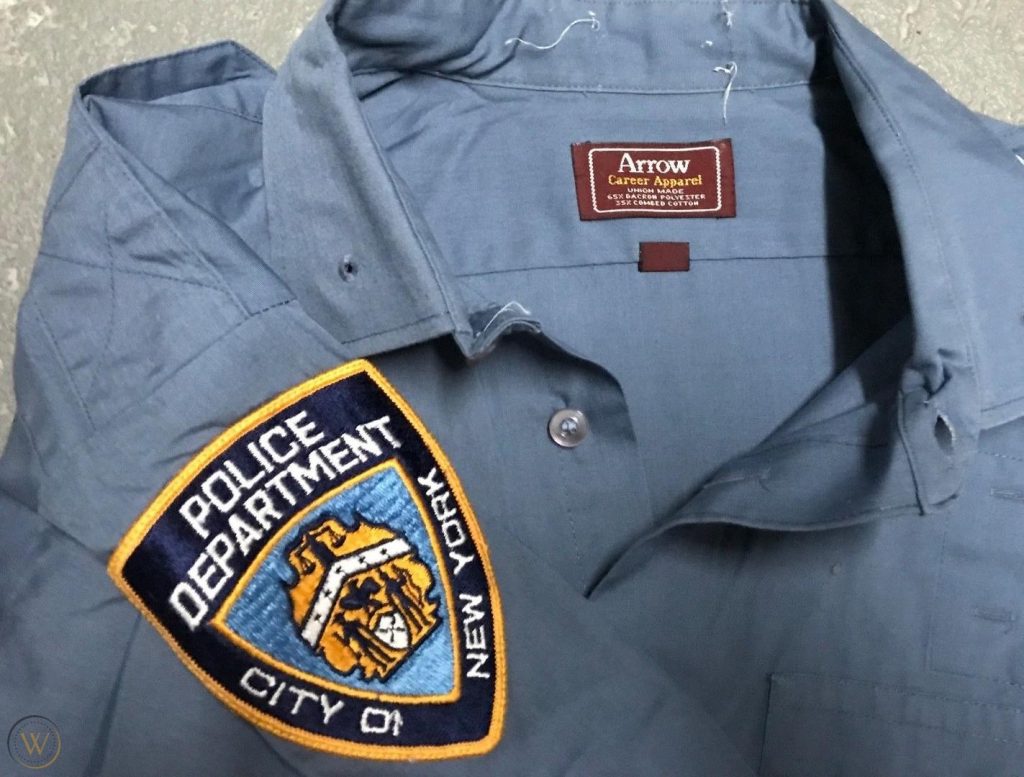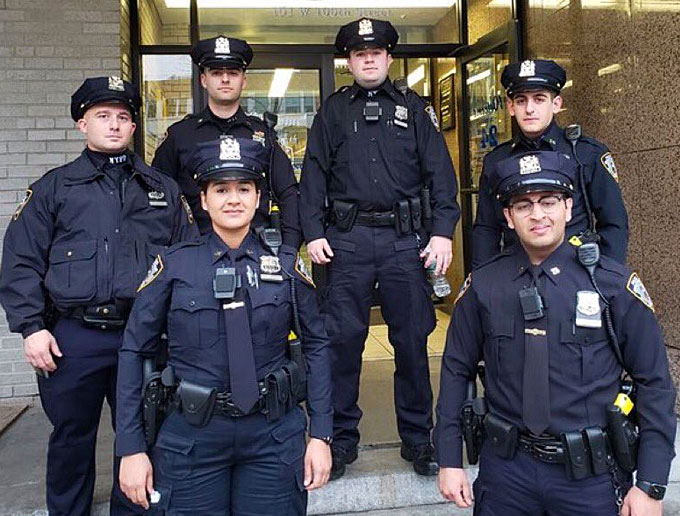Why The NYC Police Darkened Their Blues

Pictured above is a vintage New York Police Department uniform shirt, likely from the 1980s. Like you’d expect, it’s blue — around the United States and throughout much of the world, police officers tend to wear blue uniforms. There are two theories as to why, both of which are likely true. In 1829, the United Kingdom passed the Metropolitan Police Act, which established the nation’s first professional police department. As the military at the time wore red uniforms, it made sense to choose a different color for non-military law enforcement; blue is as close as one can get to being not-red, for the most part. In the United States, the move to create professional police departments came a bit later and really picked up steam after the Civil War. When the war ended, the prevailing Union army — the side that wore blue — had lots of leftover uniforms. Cities around the nation, such as Los Angeles (pdf), bought up these surplus shirts and pants, giving them to their law enforcement officers to wear.
But if you’re walking around the streets of New York today, you won’t find any officers wearing the uniform above. Instead, patrolmen and patrolwomen wear dark navy uniforms, as seen below (via), instead of the baby blues above.

But new uniforms cost money, and replacing the entire police force’s all at once.. that has to be expensive. So, why darken the blues?
The reason sounds like a stereotype, but it’s true: you can blame the doughnuts.
As recounted in the excellent, must-read book Now I Know: The Soviets Invaded Wisconsin?!, cops and doughnut shops have a symbiotic relationship. In order to make good, fresh doughnuts for the morning rush, doughnut makers needed to work overnight. And in order to make change for customers in the days before credit cards were a thing, these doughnut shops had to have a lot of cash on hand. So if you were up to no good at 3 AM, looking to break into a business and steal some cash, a doughnut shop would be a good target. Doughnut shops, looking to get some added protection during the dead of night, offered free or discounted treats and coffee to night-shift police officers. And so a tradition — and stereotype — was born.
But not all doughnuts are created equal. Some — plain glazed ones, chocolate crullers, and to a degree, even powered doughnuts — they’re not all that messy. Others — Boston creme, jelly — can be a recipe for disaster. The odds of biting into a jelly doughnut, only to find a smidge of jelly squirt you in the shirt, is rather high. And if you’re on a six-hour patrol shift, it’s not like you can go home to change or wash your shirt.
In the mid-1990s, this became a concern for NYC Police Commissioner William J. Bratton. Less than a year into his tenure as the commish, Bratton determined that his police force was, all too often, coming across as unprofessional if not downright sloppy, and the uniforms were part of the problem. And specifically, doughnuts and pizza were to blame. The New York Times explains:
The department switched from navy to powder blue in 1972 to give the force a softer look after race riots that broke out in cities around the country. But police officials said they found that the light blue shirts all too often showed stains from the jelly doughnuts officers ate for breakfast and the pizza they ate between patrols.
The navy blue uniforms, being darker, “would hide the coffee and doughnut stains and inspire more respect,” per a subsequent New York Times article. Whether that actually worked is anyone’s guess; there have been no reported studies addressing that assertion.
Bonus fact: At around the same time the NYPD changed their uniforms to darken the blues, they also made a change to their patrol cars — but in the opposite-ish direction. The police cars of the 1990s were mostly blue (baby blue, like the uniforms), as seen here. Today, they’re mostly white, as seen here. The reason for the change had nothing to do with pizza, doughnuts, or any other food item, though. In 1996, NYPD Commissioner Howard Safir told the Times that it was simply a cost-savings move, but a big one: “we’re switching to a single color car because it will save the department about $800 per car. I think we can save over $1 million.”
From the Archives: Color of the Day: How NYPD police officers recognize undercover NYPD officers (to a point).
